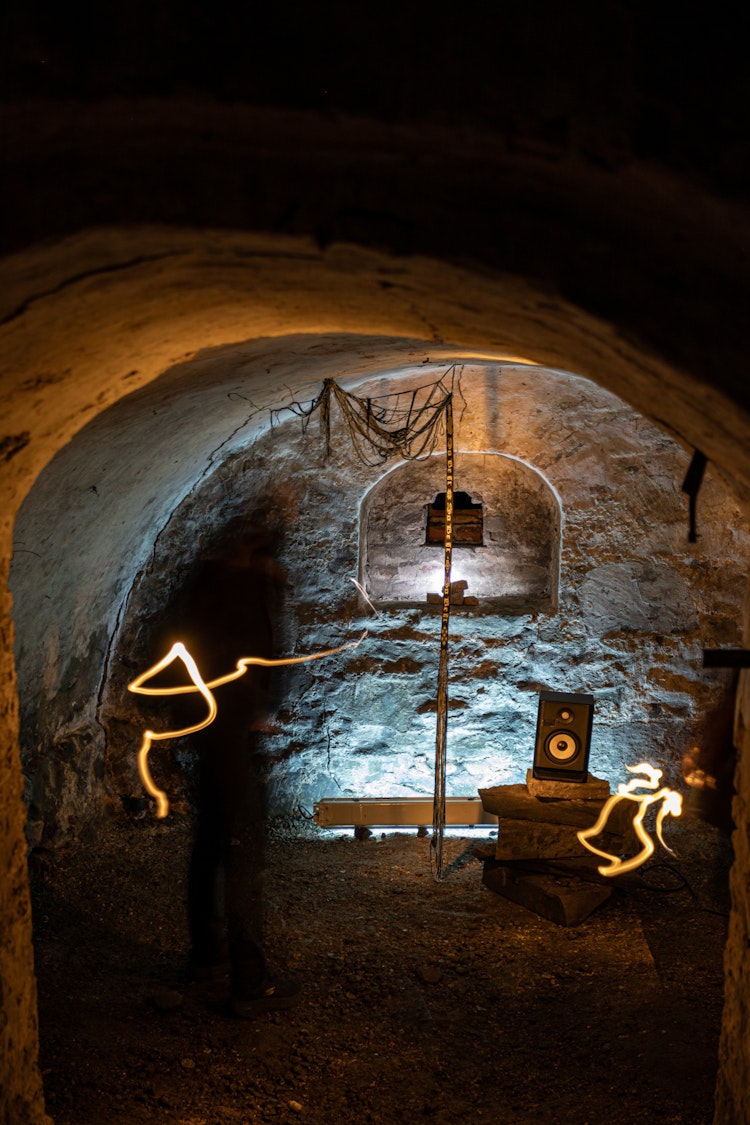

Daniel Vincent Hansen, Adrian Bugge / BO, Kunstnernes Hus
In this essay, art critic and writer Nicholas Norton reflects upon the blurring lines between fine art and crafts in the contemporary art scene in Norway. Norton explores the use of performativity and sound, and he arguments that crafts is an increasingly elastic category, capable of merging different critical perspectives that are not simply beholden to traditions of making, but that can be a way of “making” new perspectives on the world.
Artists who work with craft – ceramics, glassmaking, metal, woodworking, textile and so on – are often committed to the idea that craft objects gain their meaning through a combination of technique, materiality, and cultural traditions. Fine art, on the other hand has, at least since the Renaissance, presupposed that it is the other way around: ideas are what give technique and materials meaning. In The Lives of Artists (1550) Giorgio Vasari makes the claim that although the basis of a good work of art is good design or craftsmanship, there must be a clear idea underpinning any depiction. This definition of art allows Vasari to argue that art is an intellectual and spiritual endeavour, elevating the artist to a social standing above mere craftsperson, his ingenuity divinely inspired and therefore deserving of praise and admiration.1
Fast forward to contemporary art, or more specifically, the notion of the contemporary that emerged with conceptual art in the 1960s, and it is clear that art, no longer connected to the divine, sees itself as an elevated commentary on a diverse set of societal concerns including, but not limited to, politics, philosophy, social relations, globalism, geopolitics, technological development, and ideology. All topics which craft, with its narrower focus on process, tradition, and materiality, has traditionally eschewed. Additionally, craft has its own wholly separate ecosystem of artists’ organisations, galleries, journals, magazines, annual exhibitions, and prizes. The curator and art historian Glenn Adamson has argued that craft is “a way of doing things”, and that unlike modern art, which insists on the work of art as an autonomous aesthetic object, craft objects have an explicitly functional or decorative intent. Adamson is also quick to point out that crafts' inferior position is historically grounded in very real marginalisation, with work by women, indigenous people, and people of colour often being categorised as something other than fine art – in other words, craft.2
Umar’s work shows that aesthetic hierarchies, like that between art and non-art – or the divide between craft and fine art – are closely connected to other types of hierarchies, like that between colonising and colonised cultures.
However, a cursory glance at the art scene in Norway and elsewhere would seem to indicate that these lines are blurring. Many recent craft-based art practices complicate the historical divide between craft and non-craft which Adamson so precisely described back in 2007. Take, for instance, Ahmed Umar’s show Glowing Phalanges at Kunstnernes Hus in Oslo last spring (2023). Here, Umar showed 99 sculptures, each a deeply personal and finely crafted take on Sudanese prayer beads. These are all made from materials – various kinds of wood, bone, leather, pearls, and more – recovered from souvenirs that skilled craftspeople in previously colonised countries such as his country of birth, Sudan, make to sell to Western tourists. This approach, where he transforms the non-art object (souvenirs) into a work of art, could be said to comment on the marginalisation of craft, but also posits that the divide between craft and fine art is a by-product of both the European colonial project and European cultural ignorance. Umar’s work shows that aesthetic hierarchies, like that between art and non-art – or the divide between craft and fine art – are closely connected to other types of hierarchies, like that between colonising and colonised cultures.
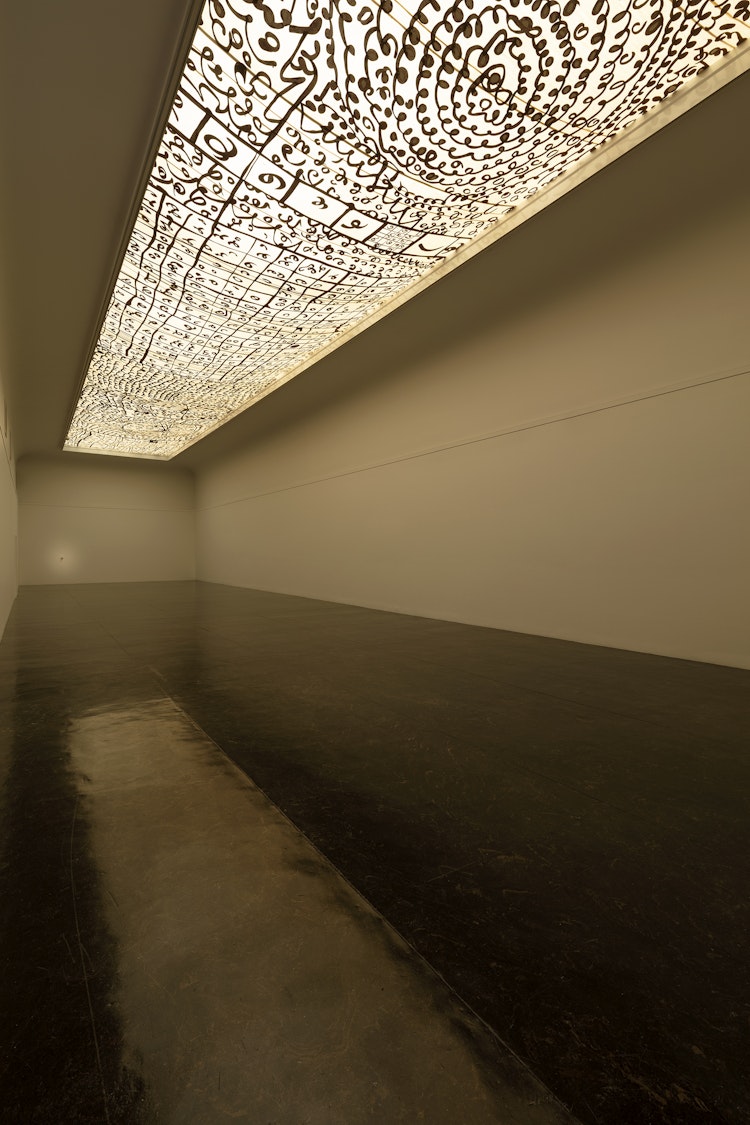
In addition to his sculptures, Umar showed a large, ceiling-hung tapestry, accompanied by a sound piece. The latter, featuring male voices chanting prayers, creates a solemn, introspective atmosphere. His use of sound, together with his reclaimed and reconstructed sculptures, is an example of how craft-based practices are expanding to connect the materials, cultural traditions, and techniques at the heart of craft to overarching political concerns. In this case, the spiritual and cultural importance of Islam in many facets of life in Sudan. In Umar's case, this approach has placed him at the forefront of artists in Norway who are attempting to deal with the legacy of European colonialism, along with colleagues that are not at all associated with craft such as Sandra Mujinga, Frida Orupabo and Anawana Haloba. Umar's work implicates that the European idea of fine art, and its perceived superiority to craft, is deeply embedded in the colonial framework. Umar mobilises craft to critique Eurocentrism both historically and in the contemporary moment.
A decidedly different vector for exploring craft's critical potential could be observed in the group exhibition Unweaving the Binary Code, curated by Stefanie Hessler and Katrine Elise Agpalza Pedersen, and shown at Kunsthall Trondheim in the spring and summer of 2022 as part of the Hannah Ryggen Triennale. The exhibition included numerous examples of artists working with weaving in ways that explore its affinity with computing. The jacquard weave is often considered a precursor to the computer, due to patterns being fed into the machine on punch cards. Of course, the affinity has a history that stretches far beyond the scope of this exhibition. Artist Beryl Korot, a co-founder of the experimental artist group Raindance Corporation and a founding editor of the group's short-lived but legendary journal Radical Software (1970-74), connected the jacquard weave to both the computer and the nascent medium of video in a series of weavings and videos made in the early ’70s. In Korot's work, this binding arises because both images displayed on cathode-ray tubes 3 and images made on looms are created line by line.4
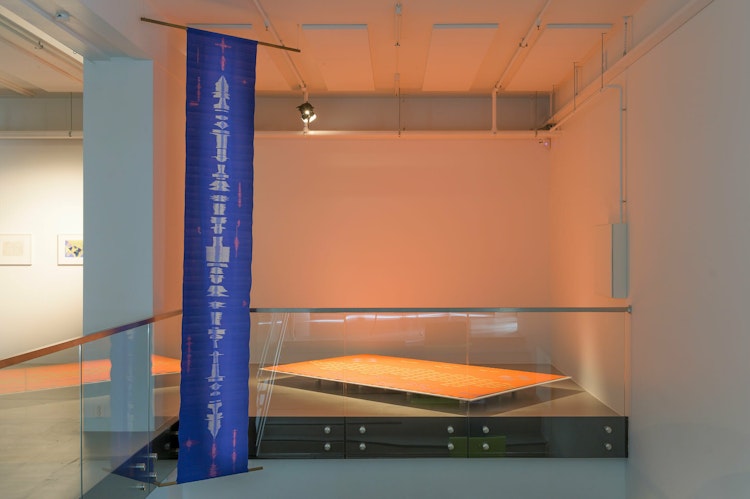
The main innovation of Unweaving the Binary Code was thus in linking technical systems such as binary code to social constructs such as gender, class, and ethnicity, further exploring how binary systems can be thought of as ideological, rather than exclusively rational. In this, the show clearly owes a debt to Donna Haraway’s famous essay on “situated knowledges”, where she argues that feminism needs a theory of knowledge that is embodied and can account for the possibility of multiple perspectives, in order to counteract the totalising and often patriarchal claims that are endemic to science and technology.5
At Kunsthall Trondheim, sound was rendered visually in Himali Singh Soin’s tapestry Mountain, pixelated in the water (2021). The work, a vertically hung blue strip made of ahimsa silk and organic cotton, features a zig-zag pattern, woven by master weaver Gajam Govardhan using the traditional dyeing and weaving technique Ikat, which is typical of Indonesia and India. The pattern dually represents a mountain range and a digital audio recording of melting ice, as it would appear in editing software such as Logic, Ableton, or Pro Tools. Thus, this piece draws a comparison between rendering representations on a screen and a tapestry, since both are made legible through interpretations of binary code. However, one might also connect the representation of melting ice to climate change, and its increasingly dire effects on life in the Global South, the scale of which is difficult to represent at all.
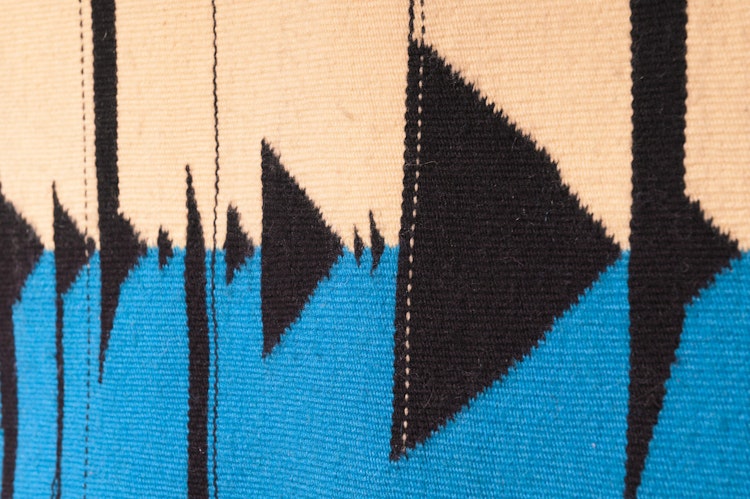
Marilou Schultz’s tapestry Navajo Weavings’ Lens Through Technology / Stock Market Digital Image (2022), which was also on display at Kunsthall Trondheim, uses traditional Navajo weaving techniques to represent a stock market chart. It is a pertinent reminder that the slow technique of weaving persists at a fundamentally different pace than the breakneck speeds of global financial markets. Similarly to Singh Soin, she engages with a craft that proceeds at a contemplative pace in comparison with the ceaseless flow of bits and bytes and capitalism.
Umar's show at Kunstnernes hus showed that the hierarchical divide between craft and fine art has a colonial dimension. Meanwhile, Unweaving the Binary Code showed that craft is integrated in technical networks, which in turn are embedded in neo-colonial structures and practices. With these examples in hand, craft shows itself to be an increasingly elastic category, capable of merging different critical perspectives that are not simply beholden to traditions of making. Craft, when unmoored from convention, can be a way of “making” new perspectives on the world.
In a lecture, available as a transcript in a recent anthology on ceramics, the potter and installation artist Theaster Gates describes the point at which his artistic practice expanded beyond ceramics. He was broke and could not afford the expense associated with firing a kiln and purchasing clay, which led him to an awareness of what he calls the “middle classness of ceramics” as well as a kind of “[…] orthodoxy around what l could do with the material that made it seem quite limiting […]”.6 Gates, rather than focusing on what makes a good or bad pot along traditional lines, instead decides to focus on what ceramics can do in a wider context. He ends his lecture by exploring what it might mean to manufacture bricks — his signature object — on the impoverished south side of Chicago, where he has initiated several non-profit neighbourhood renewal projects, including an expansive cultural centre. Producing bricks, which he maintains that he wants to do on an industrial scale, might be a means to building and repairing, but also a way to offer employment. In this sense, craft offers possibilities beyond the context of both narrow material practices and the aesthetic side of art.
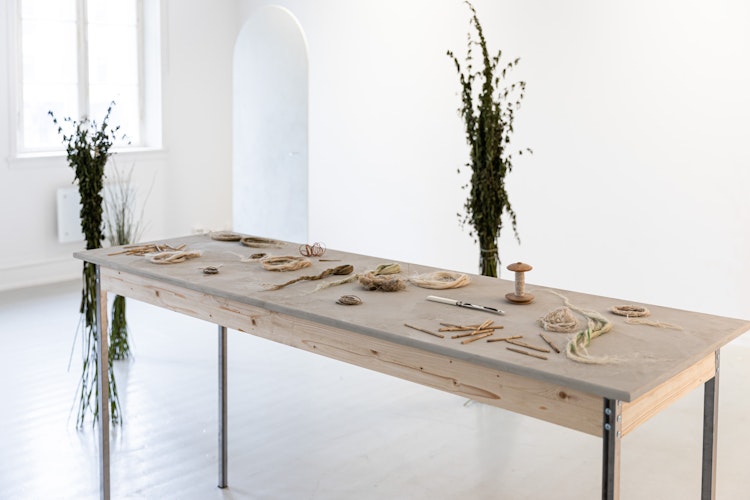
A certain “craftiness”‚ which involves what materials can do and mean socially and politically, is central to the practices of many artists that take an interest in folk remedies, natural medicine, and healing practices. For his show On Lycanthropy, Fabulation and Weaving Spells at BO in Oslo in September of 2023, Simon Daniel Tegnander Wenzel filled the gallery with a rich assortment of potionmaking implements, alongside nettles and herbs in various states of distillation, as well as decorative and sculptural configurations. Nettles, I learn, have various uses; they can be eaten, or processed into clothing. A long, braided strand of bitter nightshade, coursing along the wooden floor, seems to suggest that an old, orally handed-down knowledge has invaded the gallery, in order to challenge post-Enlightenment scientific rationality.
More than a “way of doing things”, craft is, at least in my estimation, increasingly a way of connecting disparate worlds, timelines, and ideas.
In the dark and earthy basement below the gallery, Tegnander Wenzel has placed a sound-piece, which among other things, reflects on this building’s 18th century function as the home of Oslo’s executioner, with executions often taking place directly outside. “Here, cruel acts have taken place,” a gruff voice intones, “violence, in the name of justice, in the name of God, and in the name of science”. Again, sound is used – in this case almost performatively, due to the dark, underground atmosphere – to situate a craft practice in a wider, social, historical, and critical context.
To insist that craft is inextricably about making things in a certain way, rather than exploring what making might do or mean in a wider context, is in my view also to insist on a certain kind of marginalisation or perhaps even irrelevancy to the field of contemporary art in general. In the right hands, craft can be a powerful tool for channelling and narrating diverse perspectives through a single object, thereby avoiding a singular, monolithic view of the world. More than a “way of doing things”, craft is, at least in my estimation, increasingly a way of connecting disparate worlds, timelines, and ideas.
